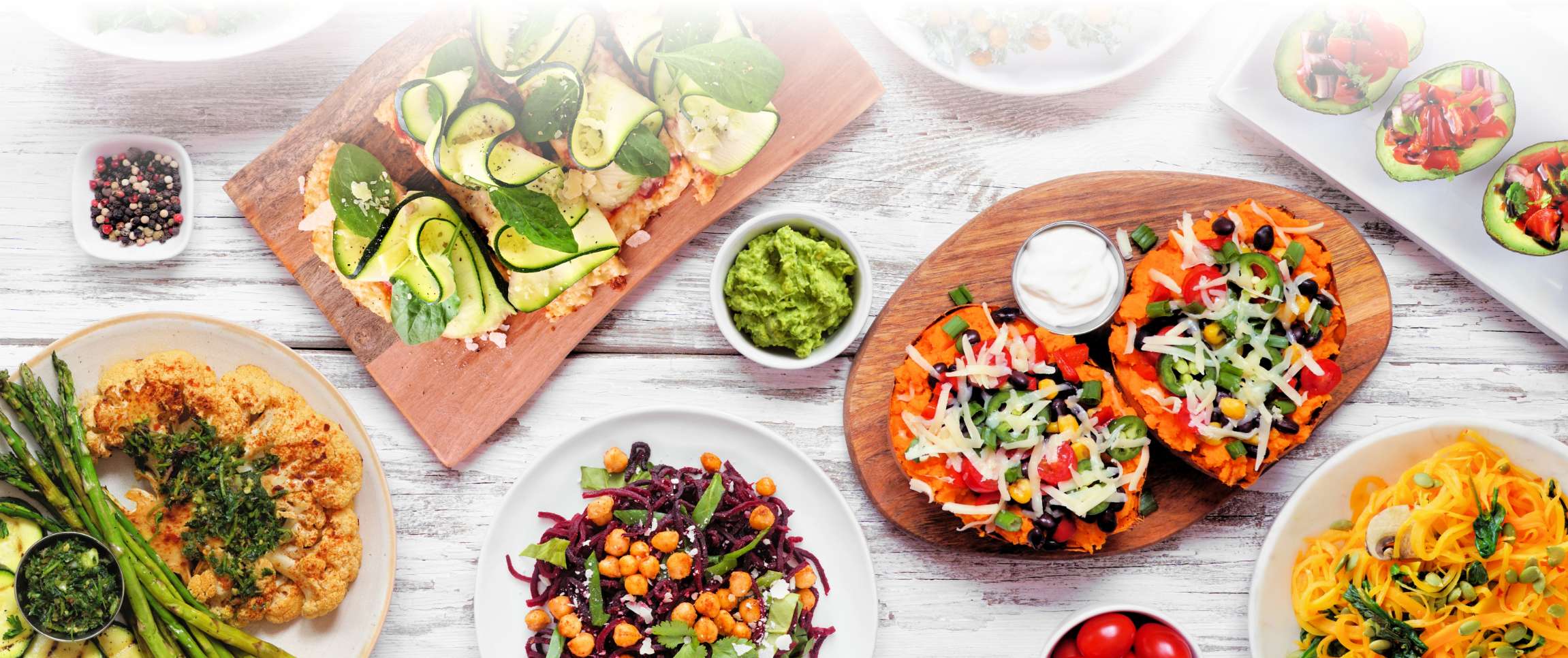More flavor, lower costs, and happier eaters — that’s the power of plants. Plant-forward eating and drinking is one of the big food trends of ‘24. Plant-based, vegetarian, or meatless, no matter how you say it, you can capitalize on produce-driven dishes without overhauling the menu.
Meatless menu options don’t have to appeal just to vegetarians though, they can be flavorful and varied enough to attract anyone who walks through the door. Adding more produce to the menu can create excitement and improve the bottom line. Go beyond the veggie burger with creative ways to make produce the focus of the plate.
Natural Meat Substitutes
The market for ultra-processed, meat substitutes like tofu and tempeh may be shrinking, but the appetite for plant-based apps and entrées is still growing. This means natural alternatives like mushrooms and cauliflower are crucial to filling the gap for those diners craving meatless options.
With faux meats possibly falling out of favor, meaty mushrooms are regaining their favored status as the choice for vegetarian sandwiches and entrées. Portobellos from Peak® Produce are a classic choice as a vegetarian option, perfect grilled whole for a sandwich, stuffed with beans as an entrée, or sliced and sautéed for fajitas. But don’t sleep on other varieties from Peak — umami-packed shitakes, mild button mushrooms, and savory oyster mushrooms add complexity and variety to a plant-based dish.
Featuring a firm, yet tender texture and neutral flavor, cauliflower is also a blank canvas for vegetarian dishes, equally at home in pizza crusts as it is in soups. This cruciferous chameleon is still on an upward trajectory in ‘24, making it a natural alternative to meat. Seared cauliflower steaks make for an impressive main dish, crispy fried cauliflower florets are delicious as a boneless Buffalo chicken wing doppelganger, and finely chopped cauliflower acts as a low-carb rice substitute for diet-conscious diners.
Making produce the star of the dish, means meat can be relegated to the supporting player, appealing to meat lovers while keeping costs down. Choose flavorful meats where a little goes a long way, like bacon or sausage, and use them to enhance plant-based dishes, adding big flavor with little added expense.
Rethink the Salad Menu
When it comes to produce, the salad menu takes up a lot of real estate. Optimize each element, from the base to the dressings to multitask ingredients, cut costs, and save time in the kitchen. Start with the greens and anchor your salad menu with Peak Nordic or Arcadian lettuce blends, offering 50% more plate coverage than spring mix per ounce, so you can serve large, impressive salads at a higher value.
Next, put the salad dressing list to work with the rest of the menu. Village Garden® Garden Herb Vinaigrette makes an excellent marinade, infusing meats, vegetables, and seafood with intense flavor before cooking begins. As a recipe ingredient, Village Garden Old World Parmesan Romano Peppercorn is a creamy, flavorful substitute for mayo, perfect for binding pasta salads, vegetable slaws, and potato salads without the need for multiple ingredients. Then once the food is out of the kitchen, dressings once again pull their weight as dips, with Ranch and Cobblestone Blue Cheese cozying up beside everything from wings to fried mushrooms.
Plant-Based Entrées
Consider simply varying a classic menu item to include produce based on what’s in season. Meat-based pasta dishes, tacos, flatbreads, and pizza can all be easily customized as a plant-based option. Your standardized recipes and concepts essentially stay the same, so there is consistency in the kitchen but a few new surprises in the dining room.
One way to do a trial run with this idea is by featuring a limited-time special, testing a new version of the most popular pasta on Meatless Monday or adding in vegetarian tacos for Taco Tuesday. And how many times have you heard someone say they chose an entrée based on the side dish? Make the sides the star with a veggie plate or a build-your-own option platter.



